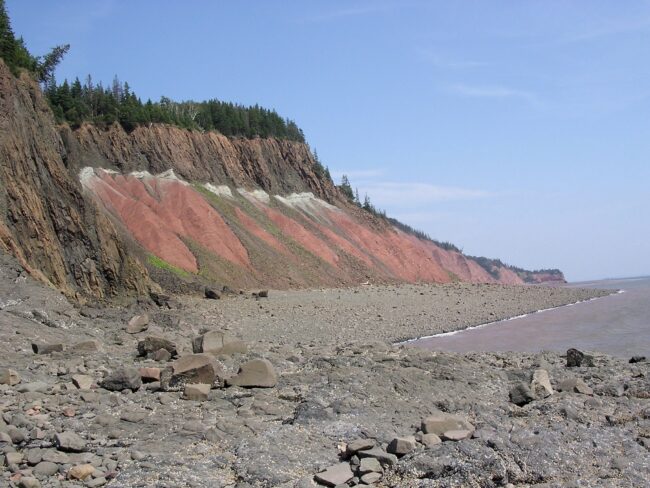Triassic-Jurassic extinction
-

Dinosaurs Thrived After Ice, Not Fire, Says a New Study of Ancient Volcanism
The leading hypothesis for a mass extinction that cleared the way for dinosaurs to dominate the Earth has long been excessive heat. A new study says the opposite.
-

Dinosaurs Took Over Amid Ice, Not Warmth, Says a New Study of Ancient Mass Extinction
There is new evidence that ancient high latitudes, to which early dinosaurs were largely relegated, regularly froze over, and that the creatures adapted—an apparent key to their later dominance.
-

In Ancient Rocks, Scientists See a Climate Cycle Working Across Deep Time
A gradual shift in Earth’s orbit that repeats every 405,000 years plays a role in natural climate swings.
-

Amid a Fossil Bonanza, Drilling Deep into Pre-Dinosaurian Rocks
On a high ridge in Arizona’s Petrified Forest National Park, paleontologist Paul Olsen sits on the fallen trunk of a 215-million-year-old tree, now turned to stone. The tree once loomed 70 or 80 feet above a riverine landscape teeming with fish, turtles, giant crocodilians and tiny, early species of dinosaurs.
-

Photo Essay: Unearthing the Lost World Below a Petrified Forest
In Arizona’s Petrified Forest National Park, researchers are scouring the fossil-rich surface and drilling deep into ancient rocks to learn what happened during the late Triassic, some 201 million to 235 million years ago.
-

Seeking the Deadly Roots of the Dinosaurs’ Ascent
Over the past 450 million years, life on earth has undergone at least five great extinctions, when biological activity nosedived and dominant groups of creatures disappeared. The final one (so far) was 65 million years ago, when it appears that a giant meteorite brought fires, shock waves and tsunamis, then drastically altered the climate. That killed off…
-

Along an Ancient Coast, Clues to a Global Extinction
Wave-washed sea cliffs along the coasts of western England and Wales are home to spectacular assemblages of rocks and fossils that may hold keys to understanding a sudden global extinction 201.4 million years ago that cleared the way for the rapid evolution of dinosaurs. Paleontologist Paul Olsen and geologist Dennis Kent of Columbia University’s Lamont-Doherty…
-

The Triassic and Today: Hinge Points in Earth’s History
Paleontologist Paul Olsen has been investigating the causes of Triassic-Jurassic extinction–a turning point in earth’s history that wiped out many life forms and started the reign of dinosaurs. More than 200 million years separate us from this catastrophe (also called the End-Triassic Extinction), but it could contain some lessons for us today, says Olsen. For…
-

Drilling into the Jurassic in New Jersey
One hour from New York City, where the suburbs of New Jersey give way to farms, a team of scientists are drilling for ancient rocks on the edge of a cornfield. The rocks hold clues about what the earth was like about 201 million years ago,during the great extinction that allowed dinosaurs to dominate. Listen…

AGU25, the premier Earth and space science conference, takes place December 15-19, 2025 in New Orleans, Louisiana. This year’s theme—Where Science Connects Us—puts in focus how science depends on connection, from the lab to the field to the ballot box. Once again, Lamont-Doherty Earth Observatory and Columbia Climate School scientists, experts, students, and educators are playing an active role, sharing our research and helping shape the future of our planet. #AGU25 Learn More
